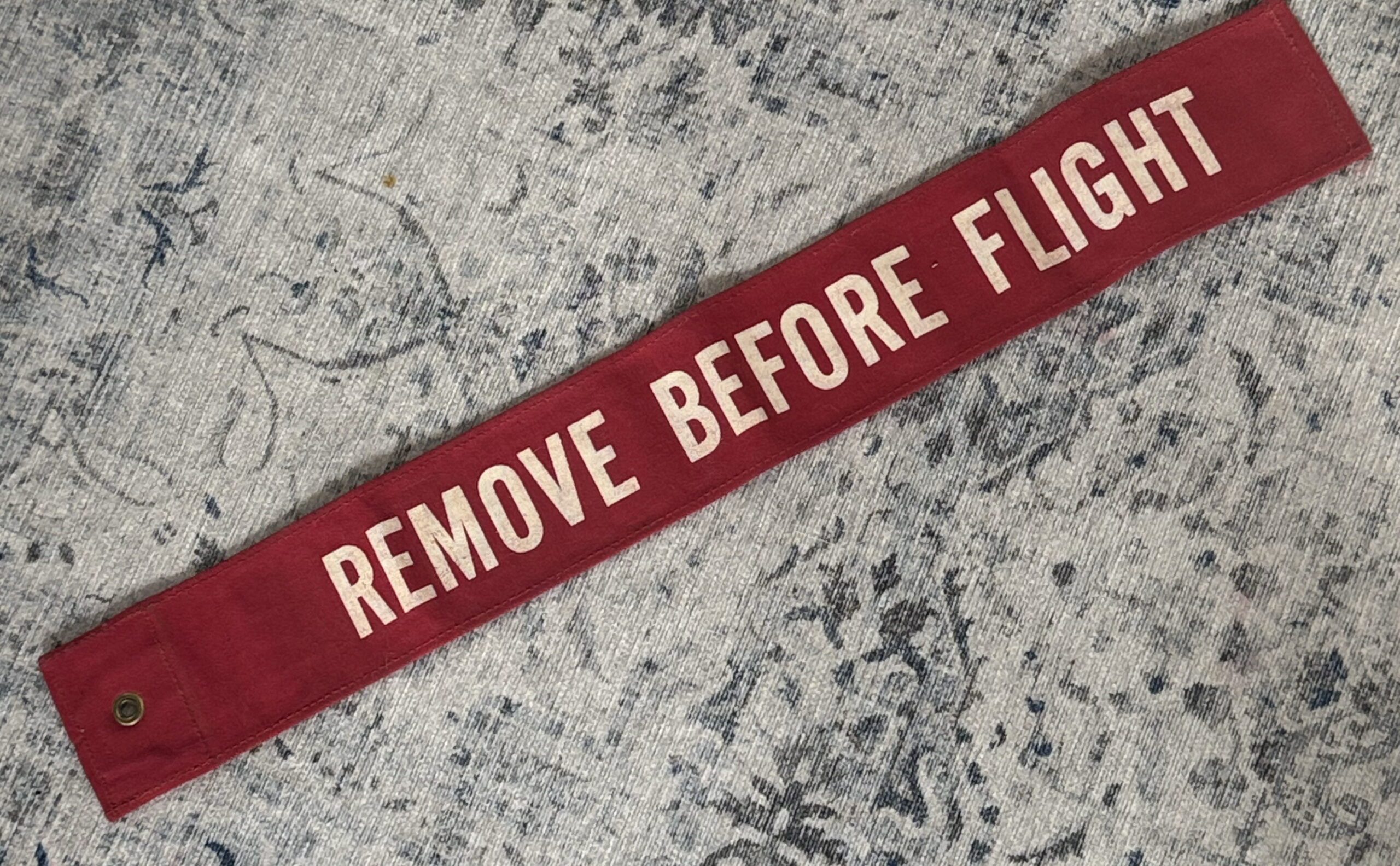
My dad armed minuteman missiles back in the ’60s.
He was not military, but worked as an electrical engineer on the military bases in Montana down in the silos where the missles are kept. As you can imagine he had a lot of stories and apparently there was even a photo of him sitting on top of a nuclear warhead. He passed away last year and this is one of the flags he kept on the wall by his desk. This flag was attached to a misslile and it would be removed when the missile had gone through all its many checkpoints and was ready to be fired. Funny story, he said that during the Cuban missile crisis most of the missiles were not even working so could not have been fired anyway.
And this reminds me of painting. (Like everything does) Last week I was teaching a workshop in Clemson and the first day of class finds me talking a lot about planning and less about painting. There is so much prepwork for a painting- ideas, thumbanils, design, color studies, value studies, hierarchy planning, surface limitations, color harmonies, and, of course, power limitations. Most of that will sound confusing, but just know that all decisions feed into the path of the painting. Because painting is a journey. And I wish, when everything was all “set” in both my mind and in my sketchbooks, that there was a red flag that you released that said “let’s go!”
Sadly, this is not the case. Decisions, decisions. And most shift and slam against each other during creation. Can we keep on track to our original ideas? Can we keep the energy and original intentions as we go along? The only thing worse than a bad decision is not making one at all. Or just diving in and hoping for the best.
Yeah, that will blow up before lifting off from the ground.
If you are not used to getting a clear target on where your painting is heading you may find yourself in a place you did not want to be at with your work. And that is truly frustrating. So slow down. Plan. Thumbnails! thumbnails! Yes, this means you. We all want to get to the “good stuff” and paint in those pretty colors, but first make sure everything is ready to go.
…or boom!

So, so true! I watched a video about backgrounds recently and the speaker said never to go into a painting without a clear plan for both the subject and the background. Gotta make that a standard practice!
Wise words! At the moment I’m struggling to rescue a painting that I didn’t put sufficient planning into. Yes, I should have done my value sketches. “The mind was willing but the flesh was weak”
Good one!
Well said. Your analogies, your reminders—with a bit of nostalgia thrown in—all spot on!
This one got me thinking. At one time, I just had to do thumbnails, notans and/or sketches before I started a painting. I still do sometimes. But mostly not. After reading this, I had thought perhaps I’d gotten lazy. I don’t sell many of my pastels. I already know I am not God’s gift to the artworld, but I do some good. Learning all the time and enjoying the trip. What I do enjoy doing is a detailed graphite drawing of the intended piece (unless it’s out in the wild). As much as I love pastels, graphite is a close second or third. It seems to solve most of the potential problems that may arise. So, I suppose this would be considered “my plan”. But being anything between 8×10 and 11×14, I couldn’t consider these as thumbnails. Perhaps large notans. LOL! I know, this is a fanatic thing to do. At least, that’s what I’m told. I spend so much more time with the graphite than the painting. But all in all, I know planning cannot be ignored. This has worked for me. (Or is it really?) I do a lot of sketching as well. Mostly these sketches are for fun and will never be part of a larger painting. But even though I had not purposely set out to do so, I’ve sold more graphite and small sketches than full blown pastels. Go figure.
This is frustrating yet invaluable advice.
Sometimes I just want to paint. But, some planning always results in better paintings.
Thanks for the reminder. I am in such a mess right now. Almost ready to start over.
When I take the time to sketch what I intend to paint, the painting usually is pretty good. When I don’t sketch and think before hand: failure.
Excellent analogy. On Day 1 of my taking Dan Greene’s workshop, I was thrilled that he spent about 10-15 minutes reviewing the various types of paint brushes, how they are used, canvases and so on. Then, how to set your easel, tilting the top slightly forward–which minimizes glare in oil, and prevents pastel and charcoal falling on your piece, and on and on. All the nuts and bolts, pragmatic stuff. Even an experienced painter would hear something new. I was a beginner in oil and pastel, basically, at this level. Spending these few minutes to start a three hour lecture went a long way. Before, and since, I always thought art teachers consistently talked over the heads of many in the class. At Seven Springs, most employees are country people. I recall Joyce, the long time info desk woman, having to take computer classes. She said that the teacher opened with, “OK. Everyone click their mouse.” Joyce looked on the floor for a mouse….True story! Keep up the fine work.